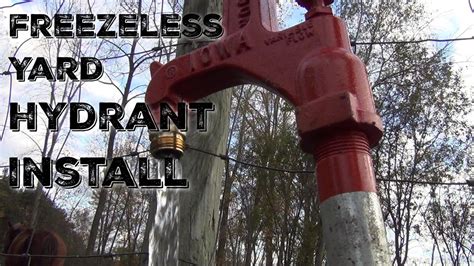Clever Solutions for Frozen Water Outdoors
Winter's icy grip can wreak havoc on outdoor water systems, from frozen pipes bursting to inaccessible water sources. But fear not, intrepid homeowner! This article explores clever solutions to tackle frozen water problems outdoors, ensuring you're prepared for whatever Old Man Winter throws your way. We'll cover everything from preventing freezing in the first place to thawing out stubborn ice when it strikes.
Why Does Outdoor Water Freeze?
Understanding the why behind frozen pipes and water features is the first step to effective prevention. Water freezes when its temperature drops below 32°F (0°C). Exposed pipes, poorly insulated spigots, and even standing water in birdbaths are particularly vulnerable. Wind chill can exacerbate the problem, rapidly lowering the effective temperature.
Preventing Frozen Pipes: Proactive Measures
Preventing frozen pipes is far easier (and cheaper!) than dealing with the consequences. Here are some proactive measures:
Insulate Exposed Pipes: This is your first line of defense. Pipe insulation sleeves are inexpensive and readily available at most hardware stores. Wrap exposed pipes generously, paying particular attention to areas most exposed to the elements.
Disconnect Outdoor Hose: Leaving a hose attached to an outside spigot can create a pathway for freezing water to travel back into the pipe, causing a potentially damaging freeze. Always disconnect and drain your hoses before the first frost.
Allow a Slow Drip: If you anticipate extremely cold temperatures, letting a slow drip of water run from your outdoor faucets can prevent freezing. The constant flow prevents the water from becoming stagnant and freezing solid. Note that this method wastes water, so it is best used as a last resort or in short bursts.
Protect Vulnerable Fixtures: Consider using heat tape or heat cables on particularly vulnerable fixtures, such as spigots or exposed pipes in uninsulated areas. These self-regulating heating elements turn on and off as needed, ensuring consistent protection without wasting energy.
Open Cabinet Doors: If you have plumbing located in an exterior cabinet or crawl space, keeping the doors open allows for better air circulation, helping to prevent freezing.
Thawing Frozen Pipes: Reactive Solutions
If, despite your best efforts, a pipe does freeze, here's how to thaw it safely and effectively:
Thawing with Heat: This is the most common and often most effective method. Use a hairdryer on a low setting, directing the warm air towards the frozen section of the pipe. Never use an open flame, as this presents a serious fire hazard.
Warm Towels or Compresses: For smaller, less severely frozen pipes, you can wrap warm towels or compresses around the frozen area. This method is slower but gentler.
Hot Water Bottles: Similar to the warm towel method, hot water bottles placed along the pipe can gradually thaw the ice.
When to Call a Plumber: If you're unable to thaw the pipe yourself, or if you suspect significant damage, call a qualified plumber immediately. Attempting to force water through a frozen pipe can cause it to burst, leading to extensive and costly repairs.
What About Frozen Outdoor Water Features?
Frozen water in birdbaths, ponds, or fountains presents a different set of challenges.
Preventative Measures for Water Features: For birdbaths, simply emptying them when freezing temperatures are expected is sufficient. For larger features, a pond de-icer or bubbler can prevent ice formation. These devices gently circulate the water, preventing it from freezing solid.
Thawing Frozen Water Features: If your pond or fountain freezes, avoid breaking the ice abruptly, as this can harm any wildlife that may be present. Instead, use a de-icer or let the ice thaw naturally as temperatures rise.
FAQs (People Also Ask)
How do I prevent frozen pipes in my home?
Preventing frozen pipes in your home involves similar strategies as outdoor prevention: insulate exposed pipes, maintain adequate heating, and ensure good air circulation. In particularly cold climates, consider keeping cabinet doors open and allowing a slow drip from faucets in vulnerable areas.
What are the signs of a frozen pipe?
Signs of a frozen pipe include: no water flowing from a faucet, unusual noises coming from the pipes, lower than normal water pressure, or bulging pipes.
Can I use a blowtorch to thaw a frozen pipe?
Absolutely not. Using a blowtorch to thaw a frozen pipe is extremely dangerous and can cause a fire. Use only safe heating methods like a hairdryer or hot water bottles.
How do I protect my outdoor faucets from freezing?
Protect your outdoor faucets by disconnecting hoses, insulating the spigot and surrounding pipes, and potentially using a heat tape or heat cable for added protection in extreme cold.
What are the dangers of frozen pipes?
Frozen pipes can burst, leading to water damage, costly repairs, and mold growth. They can also disrupt your water supply, leaving you without access to essential water.
By implementing these clever solutions, you can effectively address the challenges of frozen water outdoors and protect your property from the damaging effects of winter's chill. Remember, prevention is key, but knowing how to react when a freeze occurs is equally important.

